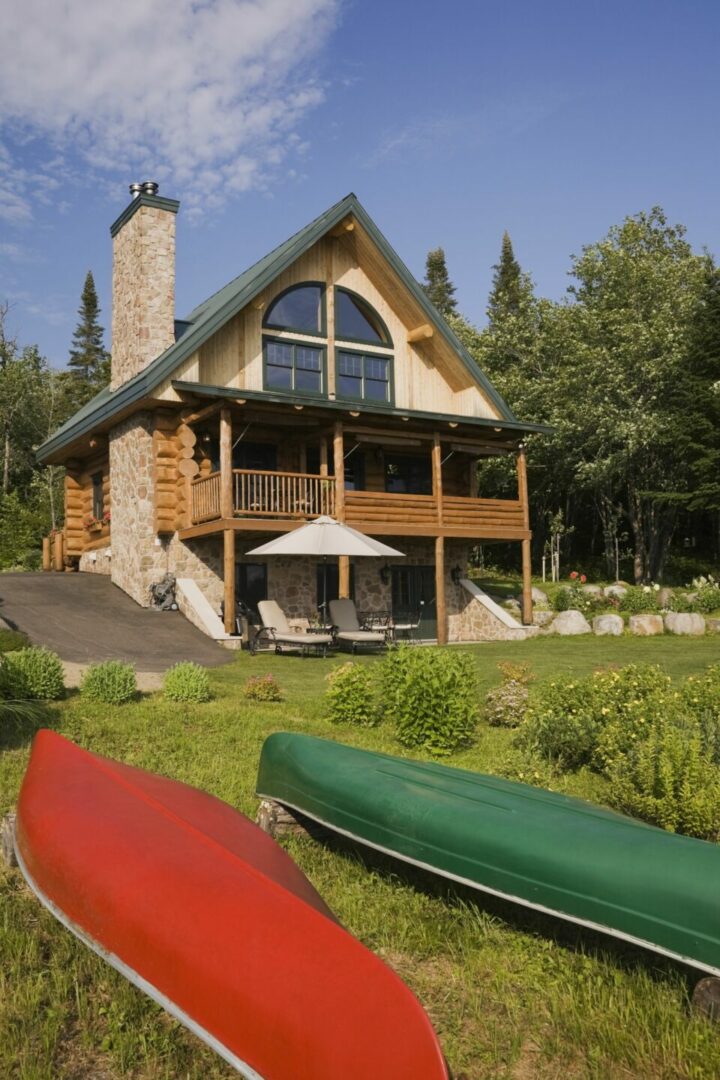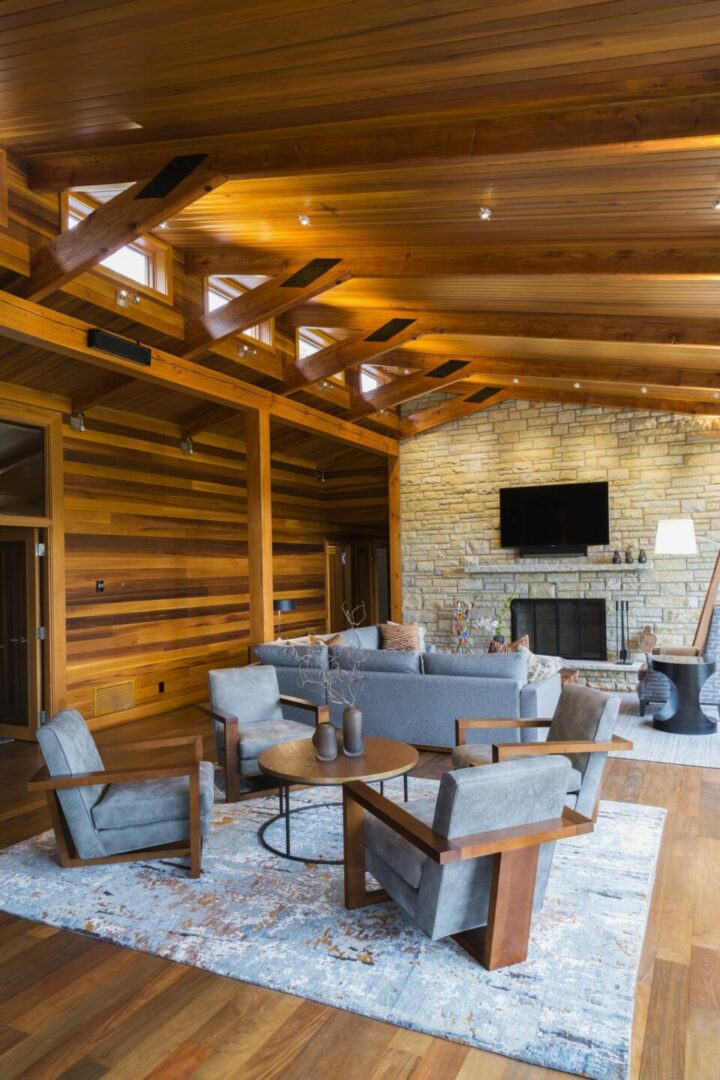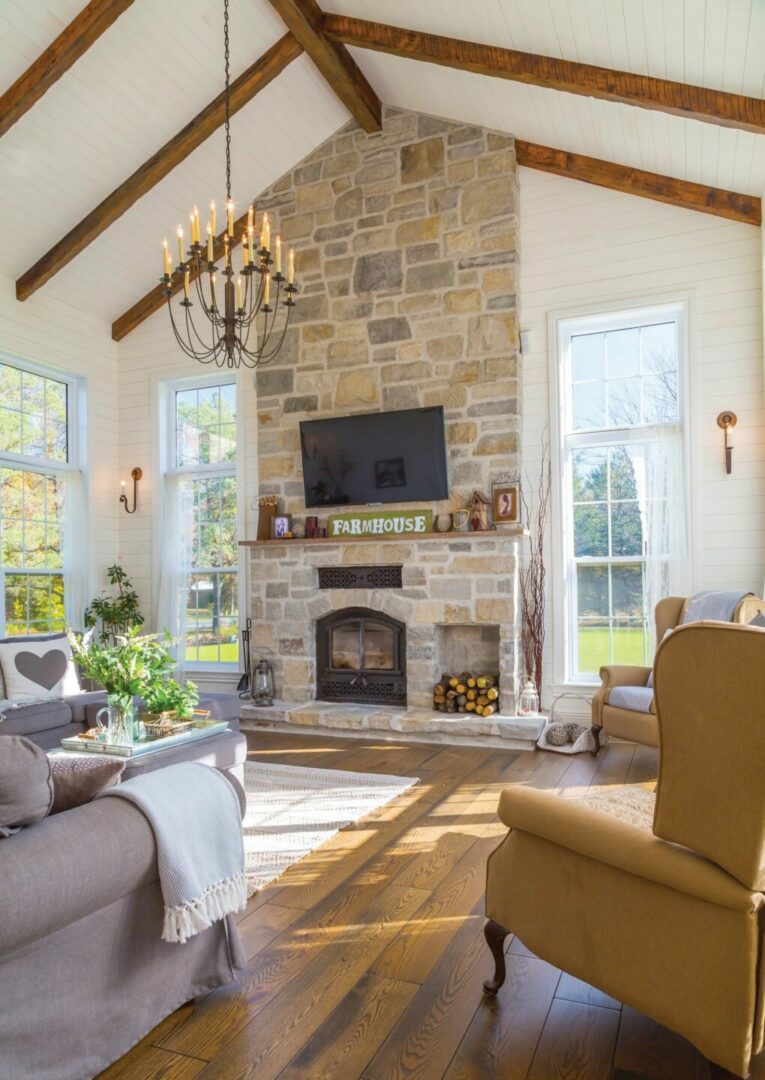Tips for a seamless journey to building and living in your new dream home.
Producers of timber frame and log homes report that interest from homebuyers in 2021 is at unprecedented highs. Buyers are seeing the historically low interest rates and the absence of new homes for sale and are concluding that buying and building is the smart decision.
If you are planning to build, be methodical from the start, advises Brian J. Sielaff, chief executive officers at Tamarack Grove Engineering (Boise, ID). Sielaff has more than 25 years of experience with log and timber frame homes and is licensed in all 50 states in the United States and all provinces of Canada.
“I encourage homeowners to do their due diligence when taking on a new home project. If you take ownership of the project, then you won’t be blindsided by circumstances beyond your control. That applies to all aspects of the process. Don’t just take a builder or contractors’ assurances. Ask for references for everyone and then check on them,” Sielaff says.

Please note that the construction phase is the last few notes in a long dance. Here’s how to plan the right moves so you don’t miss a step while strutting into a new dream home. Many of these steps can happen concurrently. Your tango should start with:
Determine Your Budget & Lender
Start shopping online using mortgage calculators. Be aware that ever since the housing crisis in 2007-2009, all the large banks stopped offering construction loans—deeming them too risky. You will need to shop for a construction-to-permanent loan among smaller banks and credit unions. Many producers of timber frame and log homes have forged long-term relationships with lenders, as well.
It’s important to note that you should secure a construction loan before signing any contracts or paying any money toward a log or timber home package.
Selling Your Current Home
If you’re selling your current home to finance this new home build, meet with real estate pros in your market as soon as possible. Just as with selecting any contractor, meet with at least three agents before deciding on which one to use. Questions to ask include the best time of year to sell, what will be the asking price, what marketing strategies will they use to attract buyers, and how they will stage your home to make the best first impression. You will likely have to move some of your possessions into storage. Once you decide to sell, it is no longer your home; it’s a product for sale.
Obtain Insurance
The time to obtain insurance is before you start the buying-and-building process or write a check to anyone, says Fred Roberts of LogHomesInsurance.com (Fayetteville, TX), an independent agency representing numerous “A” rated state and national insurance carriers nationwide.
Contractors purchase “builder’s risk” policies that cover their tools and materials. But this doesn’t insure anything you own. That’s why you need your own builder’s risk policy before you take delivery of your log and timber home package. This policy will ensure the materials delivered to your building site will be insured against theft or fire. It’s worth the peace of mind also to purchase a “Course of Construction” policy as well, Roberts says, to provide liability protection should anyone wander onto your site and hurt themselves.
In insurance terms, what’s not covered is “excluded.” For example, most insurance companies exclude coverage for flooding, hot tubs, trampolines, and dogs. Roberts advises homeowners carefully to read the policies to understand what’s covered and what’s not.
Locate Land
There are scores of websites devoted to selling land, including LandWatch, Land and Farm, and the U.S. Department of Agriculture’s resale website. Getting a great price for your parcel is important, but one has to weigh other factors, including the view, the distance to first responders, whether the weather will affect access, and how close the grocery stores are.
Obtain Building Codes
“You’ll want to know all the building codes for the area, as well as setbacks and easement requirements before you start designing your new home,” says Matt Franklin, lead Architect at PrecisionCraft Log & Timber Homes (Meridian, ID). “Otherwise, you can waste valuable time and money designing a home that won’t get built.”
Choosing a Producer
With so many companies to choose from, the process of elimination should start with what you find attractive. Your choices include:
- Timber Frame: Also called post and beam, this centuries-old style includes large horizontal and vertical beams in an open floor plan; beams can be handcrafted, milled, or both.
- Milled Logs: Logs are milled to a specific profile (D-log, round, square rectangular), easily identified by the uniform diameters on corner profiles.
- Half Logs: Wood siding applied inside and out; corner sections can be full log to maintain the illusion.
- Handcrafted Logs: Larger logs with varying diameters and a hand-hewn appearance.
- Hybrid: Some producers offer hybrid homes, which can combine timber frame, handcrafted or milled logs and offer structural insulated-panel building systems to enclose the home.
Many homebuyers set out to discover which company has the best building system. But after diligent research, they end up more confused than when they started. Truth is, there is not one single best building system on the market. If there were, every company would be offering the same one. Our advice is to put your energy into creating the perfect design for your lifestyle and building site. Then have several companies that offer the style you want, bid on your project.

Designing Your Home
Homebuyers can choose from hundreds of designs that have been built before, or they can customize these, or choose to go completely custom. Some companies can provide three-dimensional renderings of your home on your building site, to help you envision how it will live.
Most companies require a deposit before creating a custom design. Partial payments are usually required before a timber frame or log package is cut to a specific home’s design, with the balance upon delivery to your building site.
Choosing a Builder
While a few companies offer full turnkey construction, the vast majority of timber and log companies leave construction to other builders or general contractors. Many companies have builder/dealer networks across the country that can help you realize your dream, as well. If a producer recommends certain builders in your area, discover if they are available for your timetable to build. Or one can contact the local home builder’s association for a list of custom builders.
Be Brave & Have Fun
If there’s one sentiment that unites all new log and timber frame homeowners, it is that they wished they would have done it sooner. The comforting presence of large timbers, the connection to nature, and the added environmental benefit of storing the carbon in the wood for the life of the home all add up to a feeling of satisfaction and sanctuary that many crave in our increasingly uncertain world.

